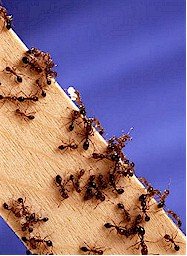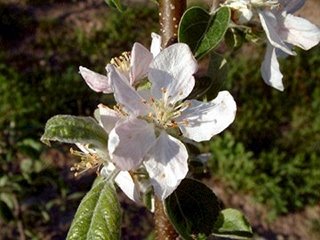By Redoubt
http://www.sincityq.com/blog/
When I was considering subject matter for this article, my first choice was to detail something unique to life in the southern states. I scanned my memory for something that stood out and it was here that I found not one but quite a few recollections worthy of some degree of examination.
Before I get into that, though, let’s first recognize that when a southerner speaks of things southern, he or she is speaking first hand.
To those who have never experienced any of it for themselves, the ability to relate is only as good as whatever southern stereotype they’ve chosen to embrace. To wit, who can truly grasp the flavor of say… southern fried chicken or a fresh pecan pie when in fact, they’ve never had a single bite of the real deal?
For those of you north of the Mason-Dixon or maybe west of the Mississippi, the distance between perception and understanding is your loss. So to bring you a little closer to the goodness, we are going to offer up a little education and some… uh, pain too.
Yes, I said pain… but first, the education.
You see, the southeastern United States’ climate is mostly subtropical with some areas along the coastlines and down in Florida being nearly… entirely tropical. In these tropical and subtropical environments grow all sorts of bugs and weeds that breed in what could be referred to as nature’s urban landscape. Life ain’t easy and as such, they are very adept at doing whatever they have to in the way of feeding, breeding and survival.
Alrighty then, now on to the pain…

I was born on the Florida peninsula and spent my first, tender years there. Back in those days, Florida was like a third world country with dirt/sand roads and an abundance of natural, tropical flora and fauna. One of the former was a weed that we knew as a ‘sandspur’.
The sandspur (Cenchrus longispinus) is a bane to bare feet as well as bicycle tires. The things grow anywhere and everywhere, even amidst the best-manicured lawns… and if you find yourself happenstance amongst a whole mess of them, you know it’s going to hurt before you even step in them. Not only that, even if you were lucky enough to be wearing shoes, your britches are likely to be loaded with them. If you don’t pick ‘em out before washing said pants, someone is likely to get hurt handling them either going into or coming out of the family Maytag.
Sandspurs are criminally inclined, masterful torturers that have no mercy. If you should ever become an unwitting victim, the memory will be with you for a lifetime, guaranteed.
After graduating from the 3rd grade… and the sandspurs, we moved from Florida to coastal Georgia. In fact, our family has many of its roots in Savannah so it was more of a homecoming than a migration.
One of the first things I found about my new surroundings was that the local species of sandspurs were there called ‘stickers’ and that they weren’t nearly as mean. Yes, they stuck and sometimes hurt but compared to what I had already been through, these guys were as benign as a broke shotgun. A little due caution and you could avoid any serious injury.
But before I really got a chance to heal and regain my childhood, there were new foes to fight and these guys were out for blood

!
The salt marsh mosquito (Aedes taeniorhynchus) is found along coastal areas from Maine to Texas but honestly, I never got to know them until I moved to Savannah. On one particular occasion when I had gone over the (old) Tallmadge Memorial Bridge into Jasper County, South Carolina along route US 17A, there was an accident and I stopped to see if I could be of assistance.
What had happened was that some tour bus had gone off the road shoulder and into the marsh immediately next to it. Back then, US 17A was just a 2-lane roadway with little or no shoulder to buffer it from those marshes. Anyway, it was a pouring rain that day and as we all sort of helped the passengers wade through the muck and up to the roadbed, we were fallen upon by kazillions of those thirsty marsh bugs who saw us… this gaggle of hairless, soaking wet bipeds, as a dinner buffet.
Here’s a few things I learned that day…
One, these suckers are HUGE! They are about twice the size of most any skeeter you’ve ever known and the spikes they jab you with to get at your blood are probably made of some form of biological carbon steel.
Two, they can and will bite through your clothes… and in July, we weren’t wearing too doggone much so while no one was injured from the actual event of that bus skidding off the road, it was nevertheless… a very bloody affair.
Okay, we’ve gone from Florida to the coast of Georgia and now finally, let’s go west to the banks of the Chattahoochee.
Far less tropical, the Chattahoochee Valley is a glorious land of rolling hills, tall pines, lazy oaks and hickories all bedded in red clay. The pace of life is substantially less hectic here but there are still dangers lurking and if you don’t known just a tad about the potential, you could be in for a world of hurt.

Meet the little, red fire ant (Solenopis Invicta), a true pain in the… uh, whatever part of the anatomy they become attached to.
Fire ants are hell on wheels and they are ready to die en masse in the course of ruining your day… and complexion. If you’re not careful, they’ll impose their death wish upon you without a second’s hesitation.
I taught my younguns early on how to identify a fire ant mound and more to the point, how to avoid them. We made a weekly ritual of scouting our property for the red invaders and when we found them, we either used a good ant killer or the old standby: a shovel, a gallon of regular gasoline and a match.
On one occasion, we had a big old Sweetgum (Sycamore) tree that was infested with these communistic insects and of course, accidents did happen. We all had the experience of having a mess of the little sadists attached to us on various, unfortunate areas of our bodies.
Well, that’s about it for now. In truth, I could have gone a few more days without recalling any of this but it’s the contrasts that stand out when relating a story. Or put another way, it’s easier to imagine the joy of a fresh pecan pie when contrasted with having a sandspur embedded in your foot. Don’t you agree?
It’s sure enough an abstract concept but for those who don’t live in the south, it’s as close as they may ever get to either… and missing any of it would just be a sin.















